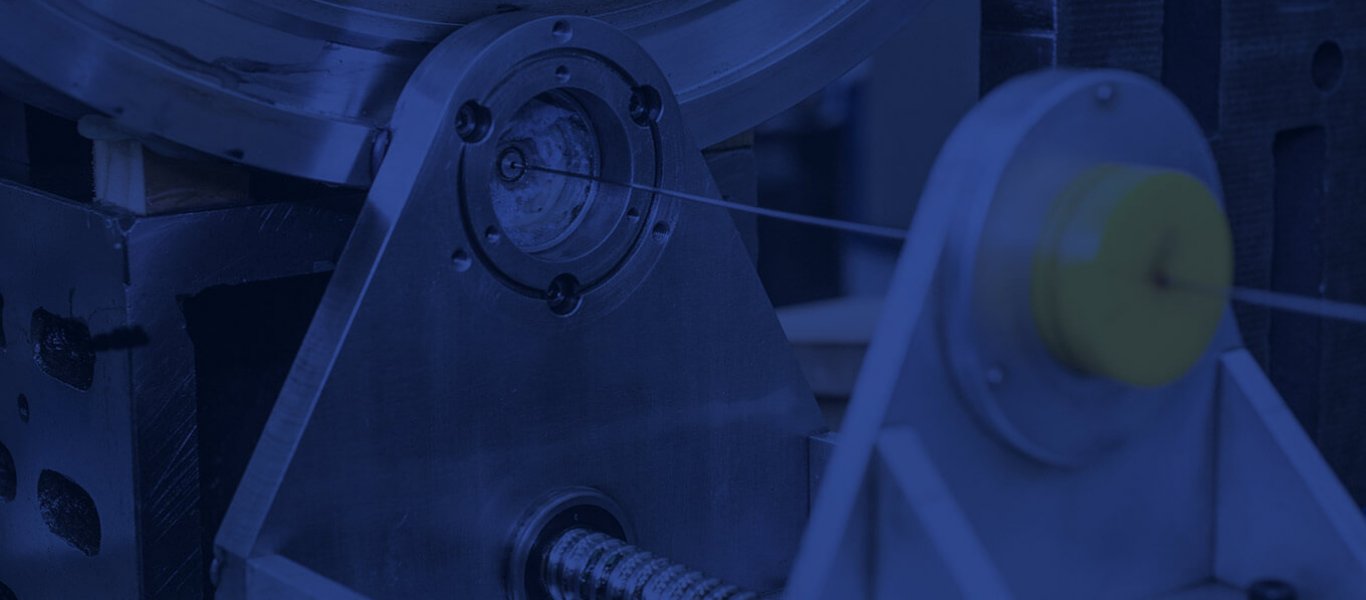Deep-Hole Drilling
The Deep-Hole Drilling (DHD) residual stress measurement technique is a semi-invasive, mechanical strain relief technique.
The technique involves drilling a reference hole through the component and accurately measuring its diameter before and after stress release by trepanning coaxially around it. The differences between the measured diameters before and after stress release enable the original residual stresses to be calculated using elasticity theory.

Schematic of the 4 main steps involved during the DHD process.
The technique is used to measure bi-axial residual stresses acting in the plane at 90° to the reference hole axis (i.e. σxx, σyy and σxy, see figure above) as standard, however when necessary and where applicable σzz can be measured, albeit with reduced accuracy. The DHD technique can be applied to a wide range of components and materials with measurement depths of up to 750mm. Bespoke machines are used for carrying out the DHD technique anywhere in the World, within the laboratory or on-site.
The DHD technique has been developed exclusively at the University of Bristol since the early 1990s with substantial funding and support from the UK nuclear industry. VEQTER is the exclusive supplier of the commercial DHD measurement service for all engineering sectors worldwide.
Procedure of the Deep-Hole Drilling Technique:
The basic experimental procedure is as follows:
- 1 - References bushes are attached and a small diameter reference hole is gundrilled through the component and bushes.
- 2 - The diameter of the reference hole (in its stressed state) is measured through the entire thickness of the component and reference bushes at many different angles.
- 3 - A cylinder of material (i.e. core) containing the reference hole along its axis is cut from the component, normally using an electro discharge machining process.
- 4 - The diameter of the reference hole is re-measured (now in its unstressed state) through the entire thickness of the cylinder and reference bushes at the same positions as in step 2.
- 5 - Compare and analyse the diameters from Steps 2 and 4 to calculate the original residual stresses present as a function of depth.

FEA simulation of the DHD technique (sectional view)
If high magnitude residual stresses are present then the Incremental DHD (iDHD) technique is be used to account for plasticity during the stress relieving process (i.e. Step 3). For the iDHD process, Step 3 is carried out incrementally and diameter measurements (i.e. Step 4) are carried out to capture the incremental reference hole distortions. Steps 3 and 4 are then repeated until a core is cut completely though the component. The analysis then incorporates all of the incremental distortions for calculating the high magnitude residual stresses.
The DHD technique is carried out using three different sizes of reference hole diameter (i.e. 1.5mm, 3mm and 5mm) depending upon the geometry of the component and the expected residual stress profile. The residual stresses measured at each depth within the core are an average of those acting within the cross-section at 90° to the reference hole axis. For a 1.5mm diameter reference hole a 5mm diameter core is extracted, for a 3mm reference hole a 10mm core is extracted and for a 5mm reference hole a 17mm core is extracted.
Advantages of the DHD technique:
- Semi-destructive – enabling repeated residual stress measurements at many different stages in component life;
- Residual stresses can be measured at depths up to 750mm;
- Laboratory or “on-site” measurements;
- Through-thickness bi-axial residual stress distribution measured (e.g. σxx, σyy and τxy), including stress gradients. σzz can be measured but with extra difficulty and reduced accuracy;
- High magnitude residual stresses can be measured (i.e. can take account of plasticity);
- Applicable to both simple and complex component shapes;
- Applicable to a wide range of materials, both metallic and non-metallic;
- Indifferent to grain structure/texture of component material;
- Indifferent to surface finish of component;
- Nominal accuracy: 10MPa – Aluminium, 30MPa – Steel, 15MPa – Titanium;
- Fast process in relation to quantity of stress information produced;
- Extracted cylinder of material provides stress-free sample for further material tests and validations.
Disadvantages of the DHD technique:
- Semi-invasive – the resultant hole might need to be re-filled or a mock-up be provided;
- Not applicable through components of less than 6mm thickness.
Further Reading:
- Leggatt, R.H., Smith, D.J., Smith, S.D., Faure, F., “Development and experimental validation of the Deep Hole method for residual stress measurement”, Journal of Strain Analysis for Engineering Design, Vol. 31, No. 3, p 177-186, 1996.
- Kingston, E.J., Stefanescu, D., Mahmoudi, A.H., Truman, C.E., and Smith, D.J., “Novel applications of the Deep-Hole Drilling technique for measuring through-thickness residual stress distributions”, Journal of ASTM International, Vol. 3, No. 4, pp 1-12, 2006.
- Mahmoudi, A.H., Hossain, S., Truman, C.E., Smith, D.J., Pavier, M.J., “A new procedure to measure near yield residual stresses using the Deep-Hole Drilling technique”, Journal of Experimental Mechanics, Vol. 49, No. 4, 2009.
- Goudar, D.M., Truman, C.E., and Smith, D.J., “Evaluating uncertainty in residual stress measured using the Deep-Hole Drilling technique”, Strain, Vol. 47, pp 62-74, 2009.








